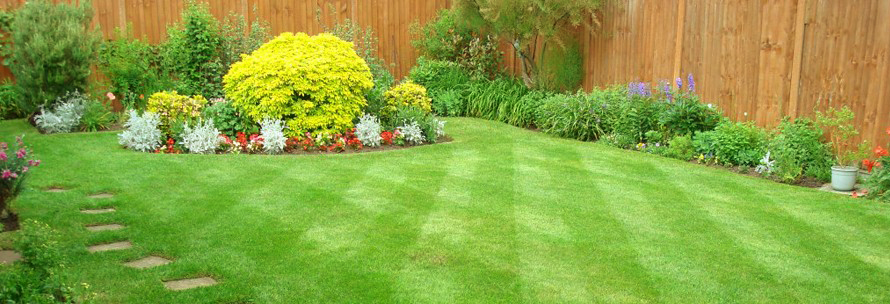Your English Garden Has True ‘Capabilities’

What do you know about Lancelot ‘Capability’ Brown? Well, the saying goes that ‘an Englishman’s home is his castle’ and one of the key ingredients of any home is its garden. If you’re ‘green-fingered’, this might consist of a myriad of beautiful flowers; tasty, organic vegetables; a well-designed compost heap; and a carefully tended lawn, with strategically placed stepping-stones running across it. Or perhaps your garden is simpler, with a functional area of paving slabs to place the barbeque, and a small patch of grass, where the kids can have a kick about?
2016, the year of the English Garden
No matter which category your garden falls into, it is an extremely important space, which deserves to be made the most of. Indeed, the organisation VisitBritain have made 2016 The Year of the English Garden. Part of their reason for doing this is to mark the three hundredth anniversary of the birth of the nation’s most famous gardener. So, who was he, and how can his principles help you look after your own little patch of land?
History of the English Garden and Lancelot Capability Brown
Lancelot ‘Capability’ Brown was born in Northumberland in 1716. He was responsible for designing over two hundred and sixty landscapes, including Blenheim Palace, Chatsworth, Croome Court, and Stowe. His nickname derived from his trademark sales pitch, whereby he would tell prospective clients that their properties’ gardens had ‘capability for improvement’.
After his schooling finished, the young Brown became an apprentice gardener to Sir William Loraine, at nearby Kirkharle Hall, before moving south to further his career. In 1741, he assisted Lord Cobham’s staff as an undergardener at Stowe, Buckinghamshire, where he worked under the famous William Kent, who was one of the founders of the new, English style of landscape gardening. Brown was successful in his appointment to Head Gardener the following year, a position he held until 1750.
Whilst Brown was at Stowe, Lord Cobham allowed him to work on a freelance basis. Which helped make his name as a gardener of extraordinary talent. An accomplished rider too, it was said that he was able to survey an estate and make rough plans for its design in under an hour.
More natural garden designs
His gardens were more natural than the styles that had been fashionable in the past. Which led to them being nicknamed ‘gardenless gardens’. His trademarks included smooth, undulating grass, which rolled straight up to the house; scatterings of trees, sometimes planted in small clumps; and serpentine lakes, supplied from hidden streams. The landscapes construct was so that different pieces of parkland within the estate, although managed independently, appeared as one, whilst significant landmarks were made visible from every area of the estate. Furthermore, he not only paid attention to the gardens themselves. Sometimes he used carriage driveways to connect them to more distant features, several miles from the main house. Examples of these features include woodland, farmhouses and, perhaps most spectacularly of all, a mock castle, which can be found near Croome Court, in Worcestershire.
Brown’s services were not always ‘hands-on’. For a fixed sum, he would draw up plans for landscapes, which clients could then execute themselves. Sometimes he appointed foremen to oversee the work, which he might then refine during a visit lasting just a few days.
Capability landscaping
He certainly created landscapes on an immense scale. His designs gave the impression that the estates ran on indefinitely. Whatever the size of the project he took on, though, three words can describe his works: functional, comfortable and elegant.
Brown is known to have suffered from asthma all of his life. His incredibly busy lifestyle, which involved near-constant travel, as well as a perhaps relaxed attitude towards his finances, inevitably affected his health. He died suddenly on 6th February 1783, at his daughter’s home in London. Buried at Fenstanton, Cambridgeshire, where he was Lord of the Manor.
The decline
During his own lifetime, Capability Brown’s held a reputation as a landscaper of extraordinary talents. The number of commissions that he undertook testifies to this fact. The poet, Richard Owen Cambridge, remarked that he wanted to die before Brown so that he could ‘see heaven before it is improved’. However, over the following century, his reputation declined. The calmness and serenity of his landscapes were no longer the vogues for the ‘Romantic’ generation. Who craved exciting, dramatic views, which demonstrated the untamed power of wild nature.
The return
Fittingly, over the last one hundred years, Brown’s star has risen once again. His gardens now attract visitors from around the world and feature amongst the National Trust’s most popular sites. His enduring popularity is shown by the fact that one hundred and seventy of his landscapes still exist today.
This gardening genius’s works might seem far removed from our own humble, little plots of land. There is still every reason for us to follow Capability Brown’s ideas when designing our own outdoor spaces. We may not be in a position to build mock castles, serpentine lakes or even plant trees. But his basic principles of functionality, comfort and elegance will always remain relevant.
How to beautify your garden
This doesn’t just hold true when it comes to patios, lawns, flowers and garden ornaments. We may well view wheelie bins as the ugly but necessary side of the garden. But that needn’t be the case any longer. We provide the opportunity for you to house your functional wheelies in comfort and elegance in one of our premium storage cupboards.
Complementing any landscape and made from the highest quality timber. While also being treated to withstand the harshest of elements. There are single, double, triple and combination storage options, all available at affordable prices. The units are simple to assemble and easily accessible, whilst at the same time built to prevent unwanted access from vandals and rodents.
So, realise the true ‘capabilities’ of your garden and browse through our impressive range of stock today. We are available by telephone or live online chat. We would love to assist you with your wheelie bin storage needs.
If we have piqued your interest in even more helpful tips and interesting articles on all things wheelie bin storage. Check out our blog.








